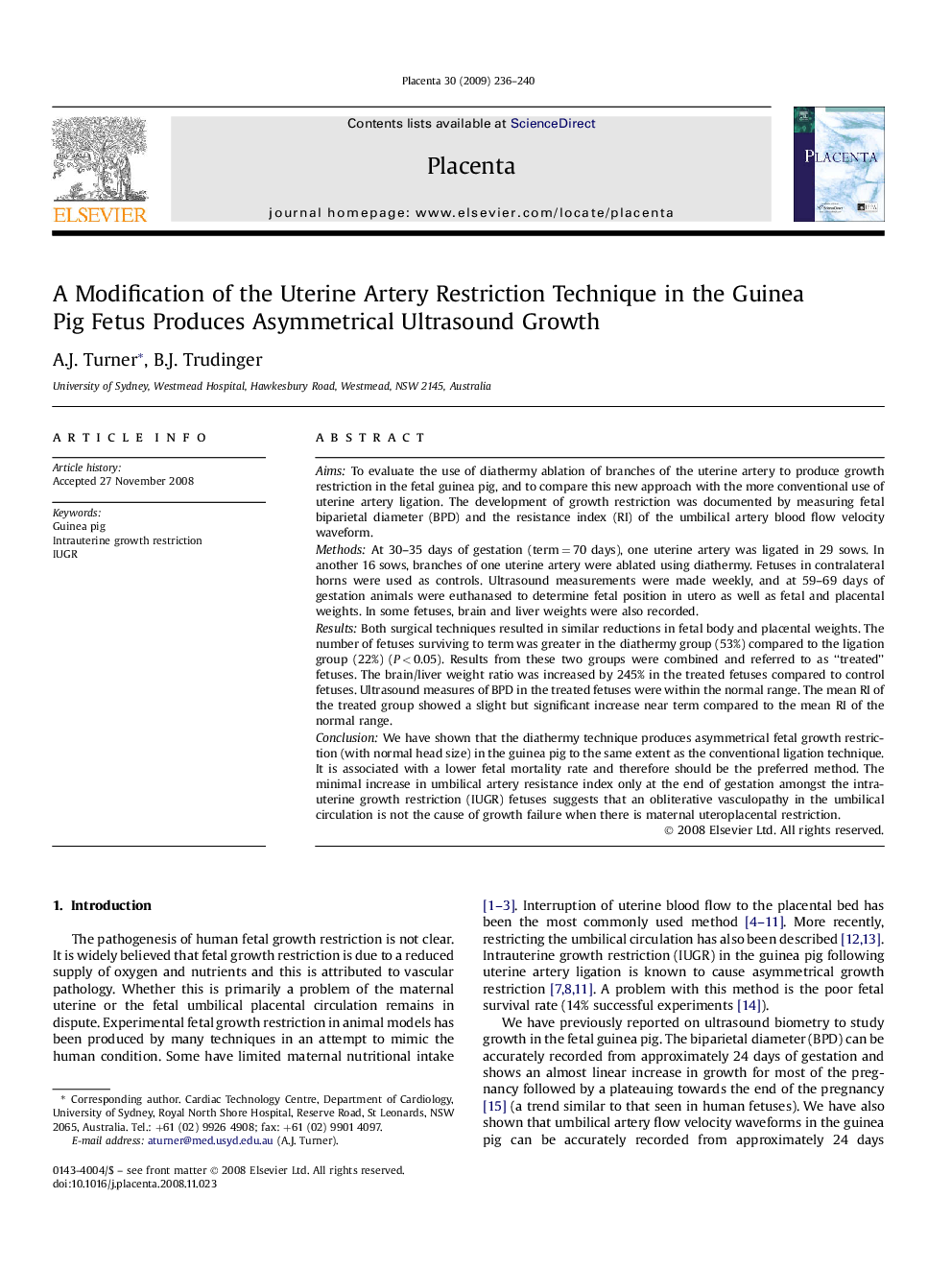| کد مقاله | کد نشریه | سال انتشار | مقاله انگلیسی | نسخه تمام متن |
|---|---|---|---|---|
| 2789923 | 1154534 | 2009 | 5 صفحه PDF | دانلود رایگان |

AimsTo evaluate the use of diathermy ablation of branches of the uterine artery to produce growth restriction in the fetal guinea pig, and to compare this new approach with the more conventional use of uterine artery ligation. The development of growth restriction was documented by measuring fetal biparietal diameter (BPD) and the resistance index (RI) of the umbilical artery blood flow velocity waveform.MethodsAt 30–35 days of gestation (term = 70 days), one uterine artery was ligated in 29 sows. In another 16 sows, branches of one uterine artery were ablated using diathermy. Fetuses in contralateral horns were used as controls. Ultrasound measurements were made weekly, and at 59–69 days of gestation animals were euthanased to determine fetal position in utero as well as fetal and placental weights. In some fetuses, brain and liver weights were also recorded.ResultsBoth surgical techniques resulted in similar reductions in fetal body and placental weights. The number of fetuses surviving to term was greater in the diathermy group (53%) compared to the ligation group (22%) (P < 0.05). Results from these two groups were combined and referred to as “treated” fetuses. The brain/liver weight ratio was increased by 245% in the treated fetuses compared to control fetuses. Ultrasound measures of BPD in the treated fetuses were within the normal range. The mean RI of the treated group showed a slight but significant increase near term compared to the mean RI of the normal range.ConclusionWe have shown that the diathermy technique produces asymmetrical fetal growth restriction (with normal head size) in the guinea pig to the same extent as the conventional ligation technique. It is associated with a lower fetal mortality rate and therefore should be the preferred method. The minimal increase in umbilical artery resistance index only at the end of gestation amongst the intrauterine growth restriction (IUGR) fetuses suggests that an obliterative vasculopathy in the umbilical circulation is not the cause of growth failure when there is maternal uteroplacental restriction.
Journal: Placenta - Volume 30, Issue 3, March 2009, Pages 236–240